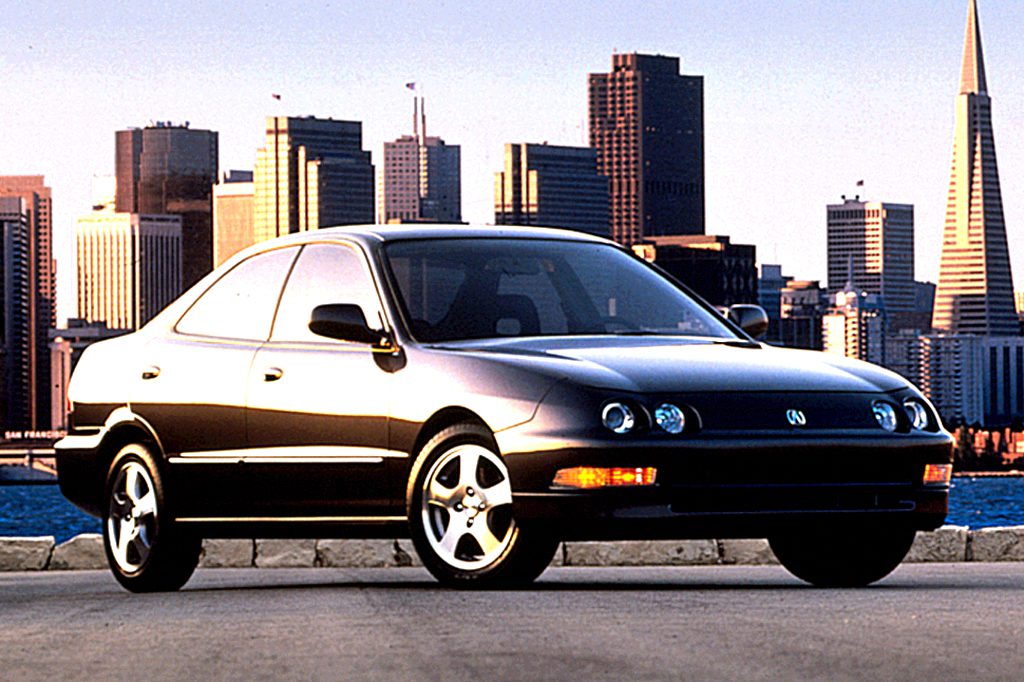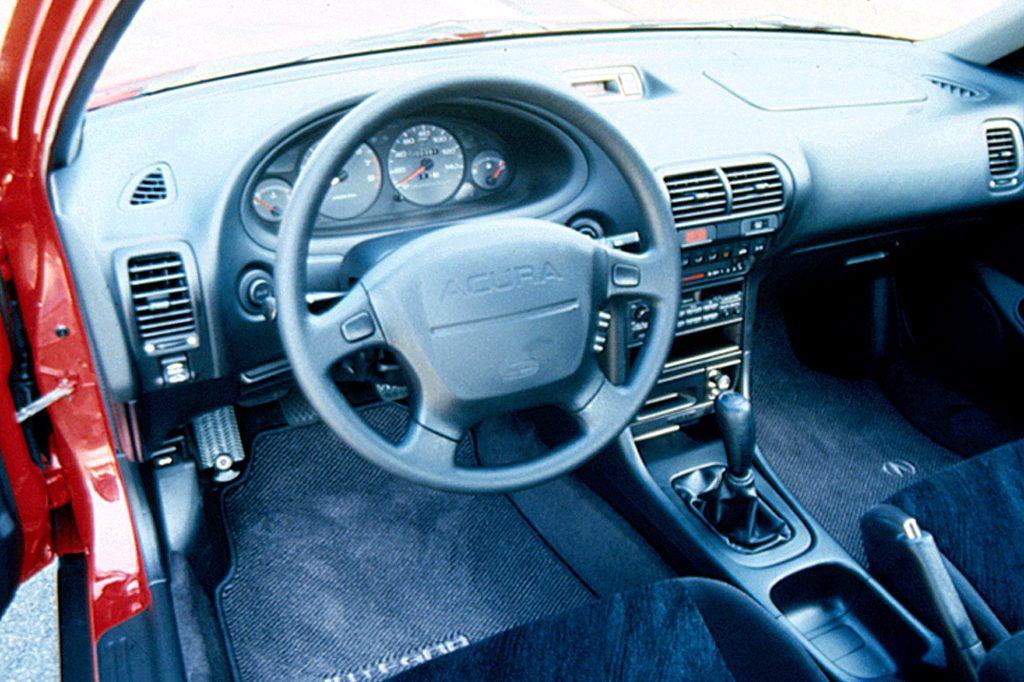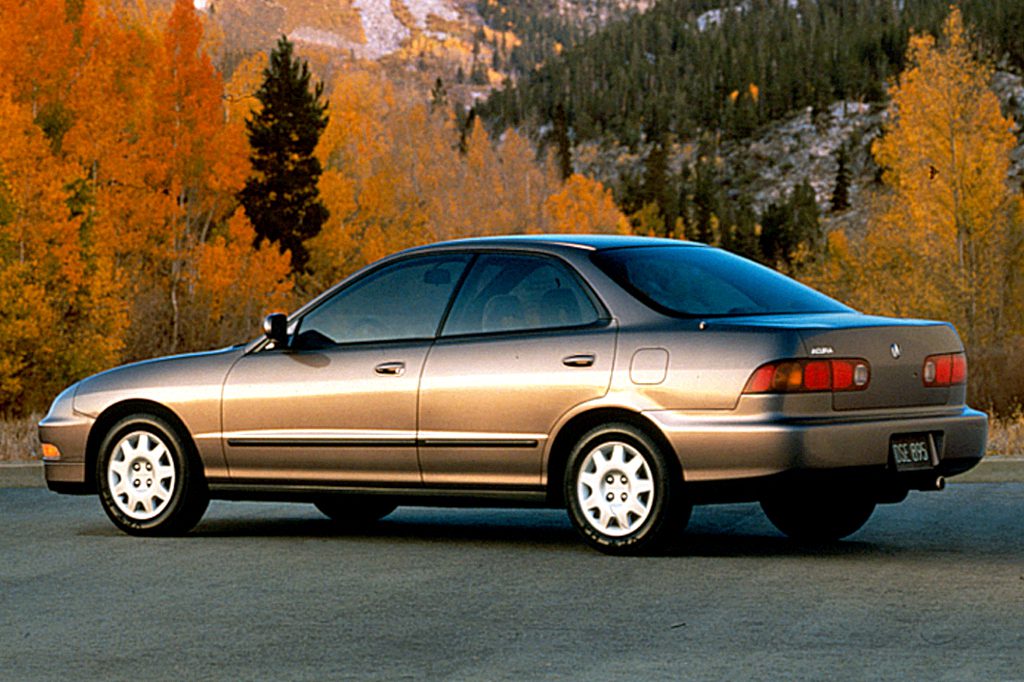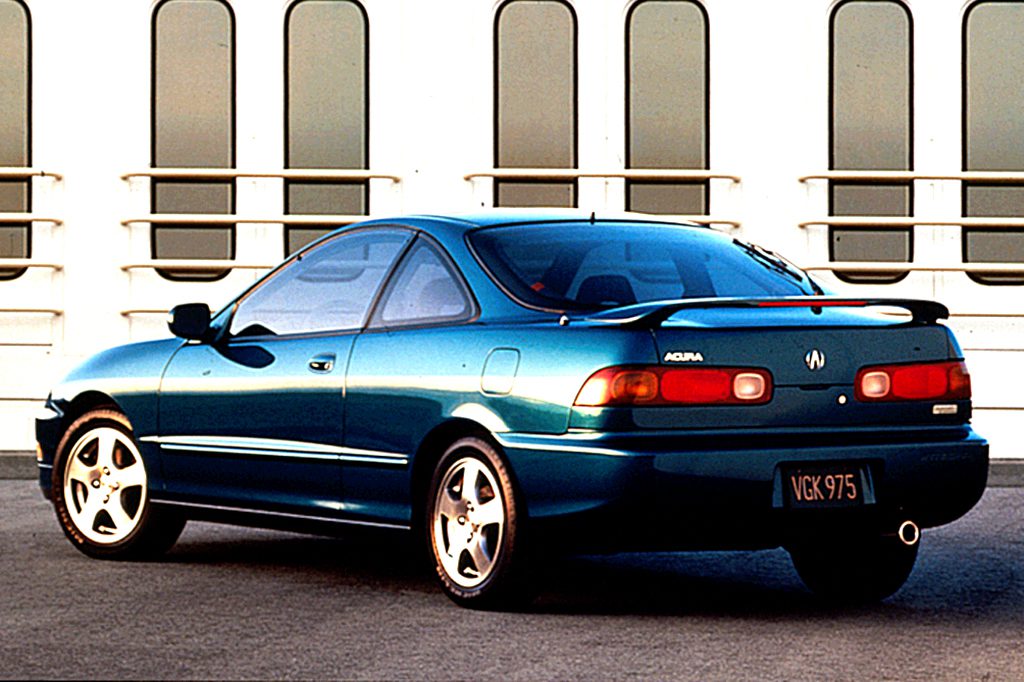| Premium compact car; Built in Japan |
|
|
| Good condition price range: $1,600 – $9,800* |

1995 Acura Integra GS-R 4-door sedan

1994 Acura Integra GS interior

1994 Acura Integra GS 2-door hatchback interior

1994 Acura Integra LS 4-door sedan

1995 Acura Integra Special Edition 2-door hatchback
| Pros: |
|
| Cons: |
|
Any Integra should be reliable, but high resale value means they’re not cheap secondhand. A Honda Civic actually offers many of the Integra’s appealing features, at a considerably lower price.
Overview
Dramatically redesigned for 1994, with dual airbags, the compact Integra 2-door hatchback coupe and 4-door notchback were based on the Honda Civic front-drive platform. Little-changed in dimensions or weight, the 2-door rode a wheelbase nearly two inches shorter than the sedan’s, and measured close to six inches shorter overall. Acura’s least-expensive model came in three levels: base RS, luxury LS, and sporty GS-R, each available in both body styles. All Integras have 4-wheel disc brakes, but only the LS and GS-R got standard antilock braking.
Yearly Updates
| 1995 Integra A new LS Special Edition arrived for 1995, mixing the base engine with GS-R looks. Leather upholstery was featured, along with 195/55R15 tires on alloy wheels and a thicker stabilizer bar. Special Edition hatchback also got a rear spoiler. |
| 1996 Integra Except for minor equipment updates, not much was new for the ’96 Integras. The GS-R got new standard 15-inch alloy wheels, while the other two models gained fresh wheel covers. |
| 1997 Integra The Integra model lineup was juggled for 1997 and the audio system traded its standard cassette player for an in-dash CD player. Also, new alloy wheels were added to GS and GS-R models. The 4-door RS was discontinued, while the “GS” badge was placed on the former Special Edition model. Except for the RS, all were available in both body styles. As a result, the lineup ascended from RS through LS, GS, and GS-R after the start of the model year. Midyear, however, Acura unveiled a limited-edition Type-R, built off the GS-R but with a 195-horsepower engine. |
| 1998 Integra Minor trim revisions marked the change from the 1997 to 1998 model year for the Integra line. |
| 1999 Integra The Integra model lineup was trimmed for the ’99 model year. Gone were the high-performance Type R and RS hatchback coupe, leaving the LS, GS, and GS-R in 2- and 4-door form. LS models added 15-inch alloy wheels (replacing 14s), plus a leather-wrapped steering wheel and shift knob. GS-Rs replaced cloth upholstery with standard leather. |
| 2000 Integra The high-performance Type-R returned to the Integra lineup this year, with newly standard air conditioning and the 195-horsepower engine. All Integras gained a standard antitheft engine immobilizer and 100,000-mile tune-up intervals. |
| 2001 Integra No significant changes were made for 2001. |
